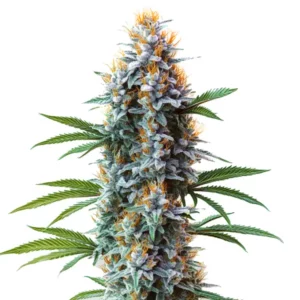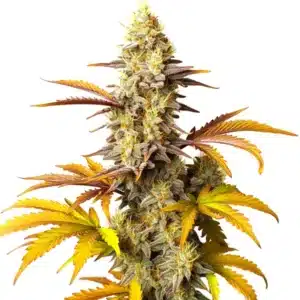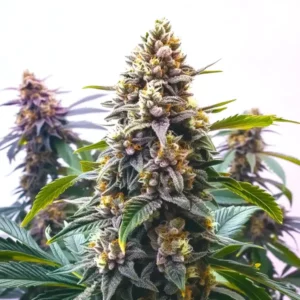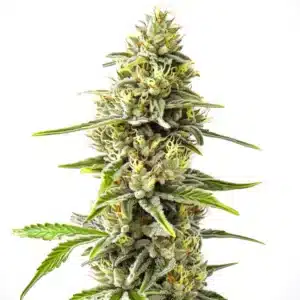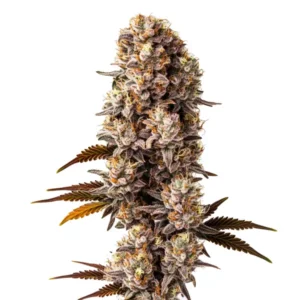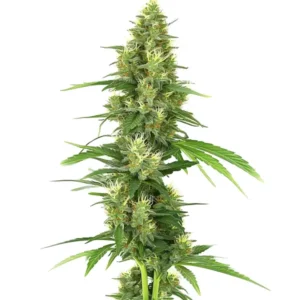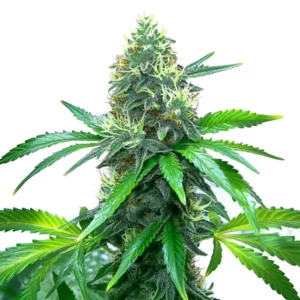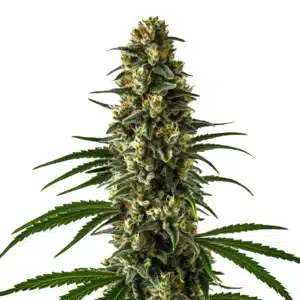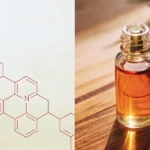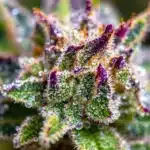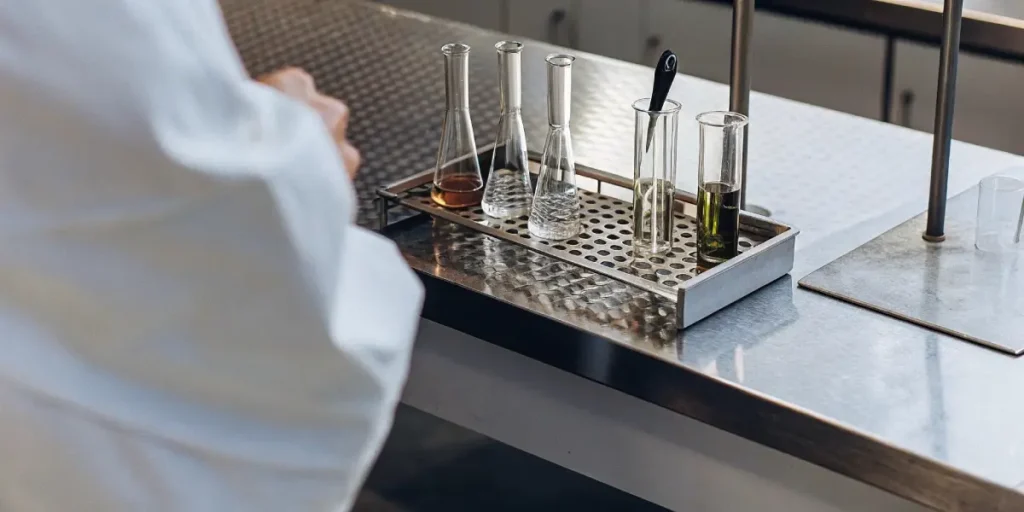
Enzymatic vs Decarboxylation Cannabinoid Conversion
When diving into the world of cannabis, two processes stand out: enzymatic conversion and decarboxylation. Knowing the differences in enzymatic vs decarboxylation cannabinoid conversion is key, as each plays a vital role in transforming cannabinoids into their active forms. Grasping these processes can elevate your cannabis experience. Let’s break them down.
Enzymatic conversion of cannabinoids in cannabis involves natural enzymes. These enzymes help convert cannabinoid acids into active cannabinoids. It’s a gentle process, relying on natural biochemical reactions. On the other hand, the decarboxylation process for cannabinoid activation uses heat. This process is faster, activating cannabinoids by removing a carboxyl group.
Recommended Strains
Blue Cheese
|
|
THC | 16% - 20% (Medium) |
|
|
Type | Feminized |
|
|
Yield | High |
|
|
Phenotype | 80% Indica / 20% Sativa |
Blue Cheese Autoflower
|
|
THC | 14% - 16% (Medium) |
|
|
Type | Autoflowering |
|
|
Yield | Medium |
|
|
Phenotype | 80% Indica / 20% Sativa |
Both methods have their merits. Enzymatic vs decarboxylation cannabinoid conversion isn’t about choosing one over the other. Instead, it’s about recognizing their unique contributions. Whether you’re a casual consumer or a seasoned grower, knowing these processes enriches your knowledge.
Enzymatic Conversion
In the world of cannabis cultivation, enzymatic conversion is a natural phenomenon. This process allows cannabinoid acids to transform into their active counterparts. How does this happen? It’s all about the enzymes present in the plant. They act like tiny workers, facilitating change at a molecular level.
For example, when you cultivate a strain like Blue Dream, enzymatic conversion happens as the plant grows. The enzymes present help convert THCA into THC, without any extra input from you. This process is slow but steady, relying on time and nature.
Enzymatic conversion of cannabinoids in cannabis emphasizes a harmonious relationship with nature. The gradual transformation allows the plant to retain its innate chemical structure, which can be crucial for those who value a purist approach. Many growers appreciate this method for its minimal intervention, allowing the plant to express its full natural potential.
Moreover, knowing the differences between enzymatic and decarboxylation in cannabinoids can help in selecting the right cultivation strategy. Enzymatic conversion suits those who are patient and willing to invest time in the growing process. This method nurtures the plant’s organic growth, potentially maximizing its natural benefits in the long term.
Pros of Enzymatic Conversion
One advantage is its natural approach. Since it doesn’t require additional heat or chemicals, the process maintains the plant’s integrity. This can be crucial for those who prioritize organic growth.
Additionally, enzymatic conversion is ongoing. During the growth phase of a strain like Girl Scout Cookies, conversion happens gradually. This slow transformation can enhance certain flavors and aromas.
This method aligns well with environmentally conscious practices. The absence of artificial interventions makes it a preferred choice for those seeking sustainability in their cultivation methods. Enzymatic conversion reflects a commitment to eco-friendly practices, reducing the carbon footprint of cannabis production.
Furthermore, enthusiasts of cannabinoid conversion through enzymatic methods vs decarboxylation often point out the nuanced flavor profiles that this method can produce. The slow, natural conversion tends to preserve the complex interplay of terpenes and cannabinoids, offering a richer sensory experience for consumers.
Cons of Enzymatic Conversion
The main drawback is its pace. Because it relies on natural processes, it can take time. For those eager to experience active cannabinoids, this might feel too slow.
Also, not all cannabinoid acids fully convert through enzymes alone. Some might remain inactive, potentially reducing the potency of your final product.
Another limitation is the variability in outcomes. Factors such as soil quality, weather conditions, and plant genetics can influence the effectiveness of enzymatic conversion, leading to inconsistent results. This unpredictability can be challenging for growers seeking uniformity in their products.
Besides, those comparing enzymatic vs decarboxylation cannabinoid conversion often highlight the potential for reduced cannabinoid yield. The reliance on natural conditions means that the full potential of the plant’s cannabinoid profile may not be realized, which could be a significant downside for commercial growers.
Promos & Deals
Decarboxylation
Decarboxylation is a more hands-on approach. It uses heat to activate cannabinoids quickly and effectively. When you heat cannabis, the carboxyl group is removed, transforming cannabinoid acids into their active forms.
This method is popular among users who want immediate effects. When you smoke or vaporize a strain like OG Kush, decarboxylation happens almost instantly. The heat from the flame or vaporizer activates the cannabinoids, providing a quick and potent experience.
The decarboxylation process for cannabinoid activation is favored for its efficiency and reliability. This method allows for precise control over the activation of cannabinoids, ensuring a consistent and potent product. It’s a preferred choice for users who prioritize speed and potency in their cannabis experience.
Moreover, the differences between enzymatic and decarboxylation in cannabinoids highlight the adaptability of the latter method. Decarboxylation can be easily tailored to fit various production scales, from small home setups to large industrial operations, making it a versatile option for diverse needs.

Pros of Decarboxylation
Speed is its biggest advantage. Unlike enzymatic conversion, decarboxylation provides immediate activation. This is perfect for those who want to feel the effects right away.
Consistency is another benefit. By controlling the heat and time, you can ensure that most cannabinoid acids are activated. This leads to a more reliable and potent product.
The versatility offered by decarboxylation cannot be overstated. Whether you’re crafting edibles, tinctures, or oils, this method ensures cannabinoids are readily available for infusion, expanding the possibilities for cannabis consumption.
Additionally, in the debate of enzymatic vs heat-induced decarboxylation of cannabinoids, the latter provides an edge in product development. The ability to fine-tune the process allows producers to maintain high standards of quality and uniformity across batches, which is crucial for medicinal and recreational markets.
Cons of Decarboxylation
However, the process requires precision. Too much heat can degrade cannabinoids, reducing potency. It’s crucial to find the right balance to prevent this.
Also, decarboxylation requires equipment. Whether it’s an oven or a vaporizer, you’ll need tools to apply heat effectively.
One potential downside is the risk of terpene loss. The application of heat can sometimes lead to the evaporation of these valuable compounds, impacting the overall aroma and flavor of the cannabis product. This aspect is a consideration for those seeking a full-spectrum experience.
Moreover, the equipment requirement for decarboxylation can be a barrier for some users. The need for precise temperature control may necessitate investment in specialized devices, which could be a deterrent for those on a budget or new to cannabis processing.
Choosing Between Enzymatic and Decarboxylation
When deciding between enzymatic vs heat-induced decarboxylation of cannabinoids, consider your goals. Enzymatic conversion might suit those looking for a natural, gradual process. It’s ideal for growers who want to maintain the plant’s integrity.
On the other hand, decarboxylation is perfect for users seeking immediate effects. If you prefer quick activation and consistent results, this method is for you. It’s especially useful for making edibles and concentrates.
Knowing the differences between enzymatic and decarboxylation in cannabinoids can guide your choice based on your lifestyle and consumption preferences. Those who enjoy the artisanal approach may lean towards enzymatic conversion, while individuals focused on efficiency might favor decarboxylation.
Furthermore, the decision may also be influenced by the end-use of the cannabis product. For therapeutic applications where precise dosing is crucial, decarboxylation may be the preferred method. Conversely, enthusiasts of whole-plant medicine may appreciate the nuanced effects achieved through enzymatic conversion.
Strain Selection
Choosing the right strain can enhance your experience with these processes. For enzymatic conversion, consider strains with high THCA content like Girl Scout Cookies. These strains benefit from natural conversion over time.
For decarboxylation, strains like OG Kush are excellent. Their robust cannabinoid profile responds well to heat, ensuring potent effects.
Strain selection plays a crucial role in optimizing cannabinoid conversion through enzymatic methods vs decarboxylation. By understanding the inherent characteristics of each strain, you can tailor the process to maximize its potential, whether through natural enzymatic action or controlled heat application.
Moreover, hybrid strains like Blue Dream offer flexibility, as they can thrive under both enzymatic and decarboxylation processes. This adaptability makes them a versatile choice for growers and users who wish to experiment with different conversion methods.
Considerations for Growers and Users
Growers should think about the end product. If you aim to sell or consume raw cannabis, enzymatic conversion might be more appealing. For processed products like oils or edibles, decarboxylation is essential.
Users should consider their consumption method. If you smoke or vaporize, decarboxylation is automatic. For those who prefer raw consumption, enzymatic conversion provides a natural alternative.
For growers, the choice between enzymatic vs decarboxylation cannabinoid conversion can also be influenced by market demands and consumer preferences. Knowing the target audience can help determine the most suitable method to meet their expectations and enhance product appeal.
Consumers, on the other hand, should evaluate their personal priorities, such as the importance of flavor, potency, and environmental impact. By considering these factors, users can make informed choices that align with their values and enhance their cannabis experience.
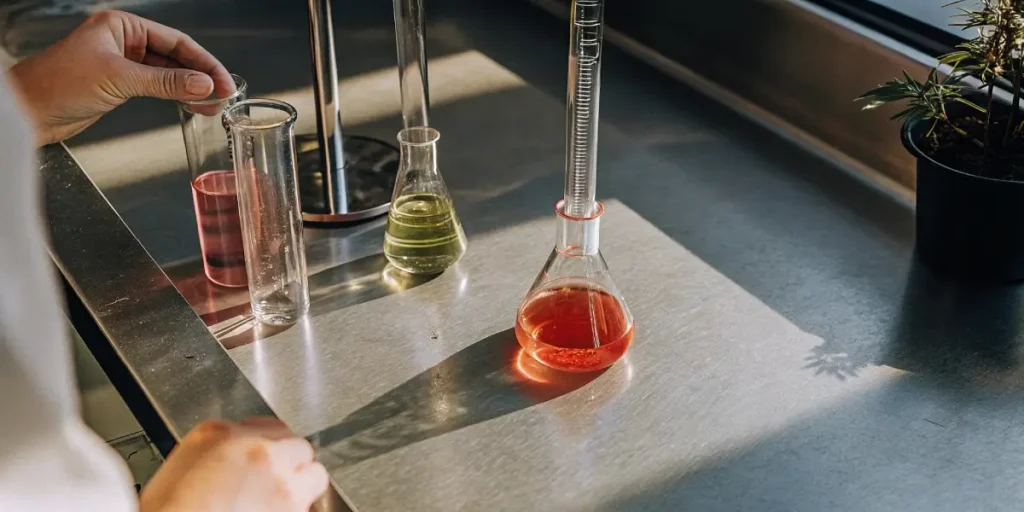
FAQs
What is the difference between enzymatic conversion and decarboxylation?
Enzymatic conversion of cannabinoids in cannabis is a natural process. It involves enzymes that gradually convert cannabinoid acids into active forms. This method is slow and relies on the plant’s natural chemistry.
In contrast, decarboxylation is a heat-based method. It quickly activates cannabinoids by removing a carboxyl group. This process is fast and ensures consistent activation, making it popular for immediate use and edible creation.
The differences between enzymatic and decarboxylation in cannabinoids highlight the diverse approaches to achieving cannabinoid activation. While enzymatic conversion emphasizes natural processes, decarboxylation offers a more controlled and rapid pathway to activation.
Ultimately, the choice between these methods depends on individual preferences and desired outcomes. Each has its own set of advantages and considerations, making them suitable for different applications and consumer needs.
How does enzymatic conversion affect cannabis potency?
Enzymatic conversion can influence potency by gradually activating cannabinoids. However, not all cannabinoid acids may convert fully. This can result in varying levels of potency in the final product.
Growers aiming for high potency might find enzymatic conversion limiting. It requires optimal conditions and time to achieve full conversion, which might not always be feasible.
The potential for variability in the enzymatic conversion of cannabinoids in cannabis is a key factor to consider. While this method can produce unique and desirable effects, it may not always provide the uniform potency that some consumers seek.
For those focused on achieving specific potency levels, exploring a combination of enzymatic and decarboxylation methods might offer a solution. This hybrid approach can provide the benefits of both processes, balancing natural conversion with precise activation.
Can I decarboxylate cannabis without special equipment?
Yes, decarboxylation can be done without specialized equipment. An oven can be used to gently heat cannabis, activating its cannabinoids. However, it’s important to monitor temperature closely to avoid degrading the product.
For those seeking precision, investing in a vaporizer or dedicated decarboxylation device can offer better control. These tools provide consistent heat, ensuring complete cannabinoid activation.
The accessibility of the decarboxylation process for cannabinoid activation makes it an attractive option for home enthusiasts. With basic kitchen tools, users can effectively activate cannabinoids, although careful attention to detail is needed to achieve optimal results.
However, for those interested in pursuing cannabis processing as a hobby or small business, the acquisition of specialized equipment can enhance the quality and consistency of the final product. This investment can lead to improved outcomes and a more enjoyable cannabis experience.
Which cannabis strains are best for enzymatic conversion?
Strains high in THCA, like Girl Scout Cookies, are ideal for enzymatic conversion. These strains have a natural abundance of cannabinoid acids that convert over time.
Additionally, strains with a rich terpene profile, such as Blue Dream, benefit from enzymatic conversion. The slow process helps preserve flavors and aromas, enhancing the overall experience.
The selection Knowing the genetic makeup and chemical properties of each strain can inform the best approach for achieving desired effects.
Growers and users alike can explore a variety of strains to discover those that align with their preferences. By experimenting with different strains, individuals can tailor their cannabis experience to suit their unique tastes and goals.
What are the best practices for decarboxylating cannabis?
For successful decarboxylation, maintaining the right temperature is key. Too much heat can degrade cannabinoids, so aim for a moderate temperature around 220°F to 240°F.
Another tip is to grind your cannabis evenly. This allows for consistent heat exposure, ensuring all parts of the plant are activated. Whether using an oven or vaporizer, even distribution is crucial for optimal results.
Precision in the decarboxylation process for cannabinoid activation is essential to maximize potency and preserve the plant’s beneficial compounds. By adhering to recommended temperatures and times, users can achieve reliable and effective activation.
Additionally, storing decarboxylated cannabis properly is crucial to maintaining its quality over time. Keeping it in airtight containers, away from light and heat, will help preserve its potency and flavor, ensuring a satisfying experience with every use.


